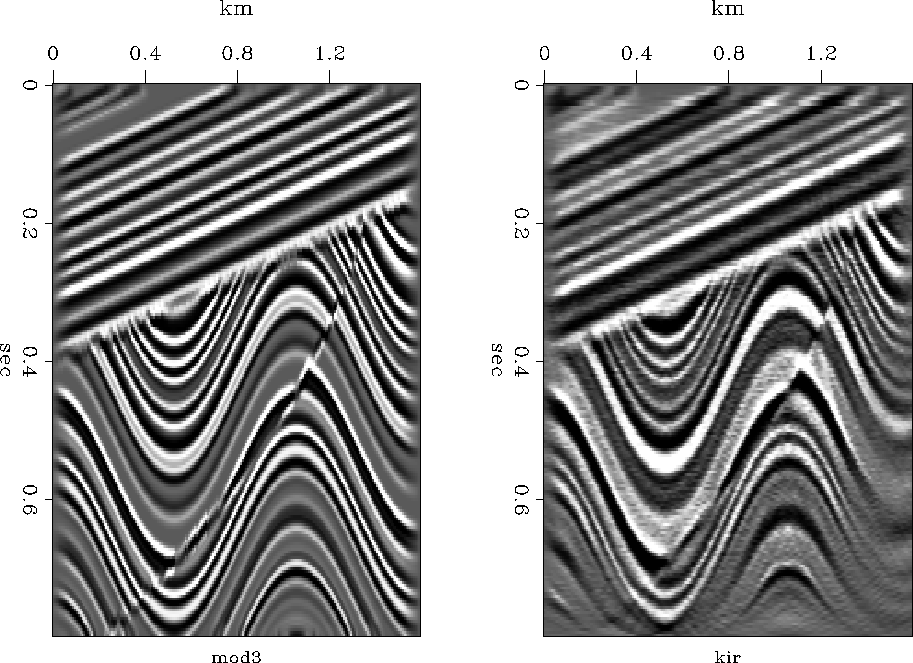 |
Figure 4 Left is the original model. Right is the reconstruction.
Given one of our pair of Kirchoff operations, we can manufacture data from models. With the other, we try to reconstruct the original model. This is called imaging. It does not work perfectly. Observed departures from perfection are called ``artifacts''.
Reconstructing the earth model with the adjoint option yields the result in Figure 4.
 |
Unlike the example shown here, real data is notorious for producing semicircular artifacts. The simplest explanation is that real data has impulsive noises that are unrelated to primary reflections. Here we have controlled everything fairly well so no such semicircles are obvious, but on a video screen I can see some semicircles.